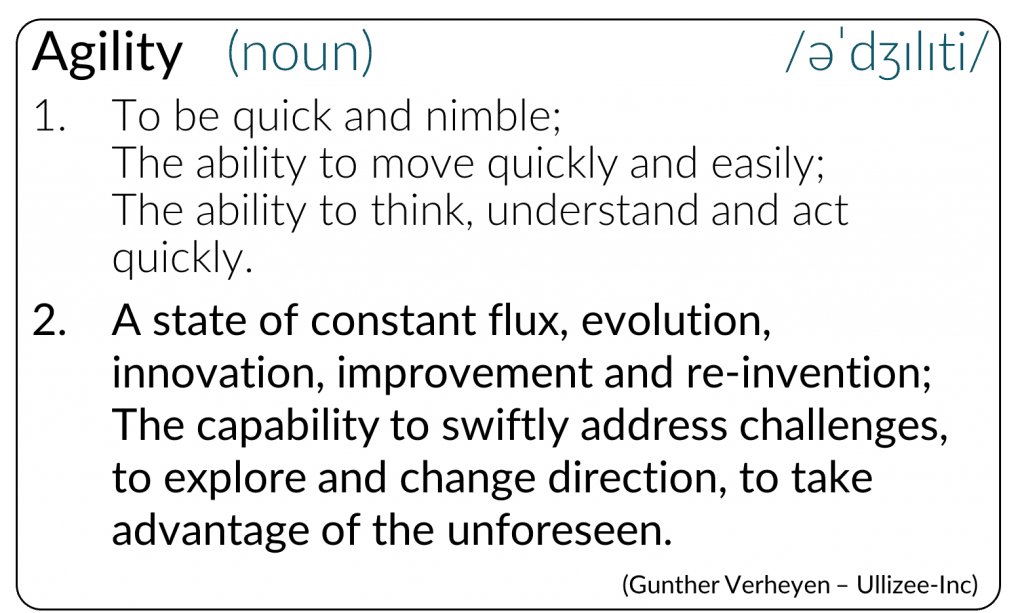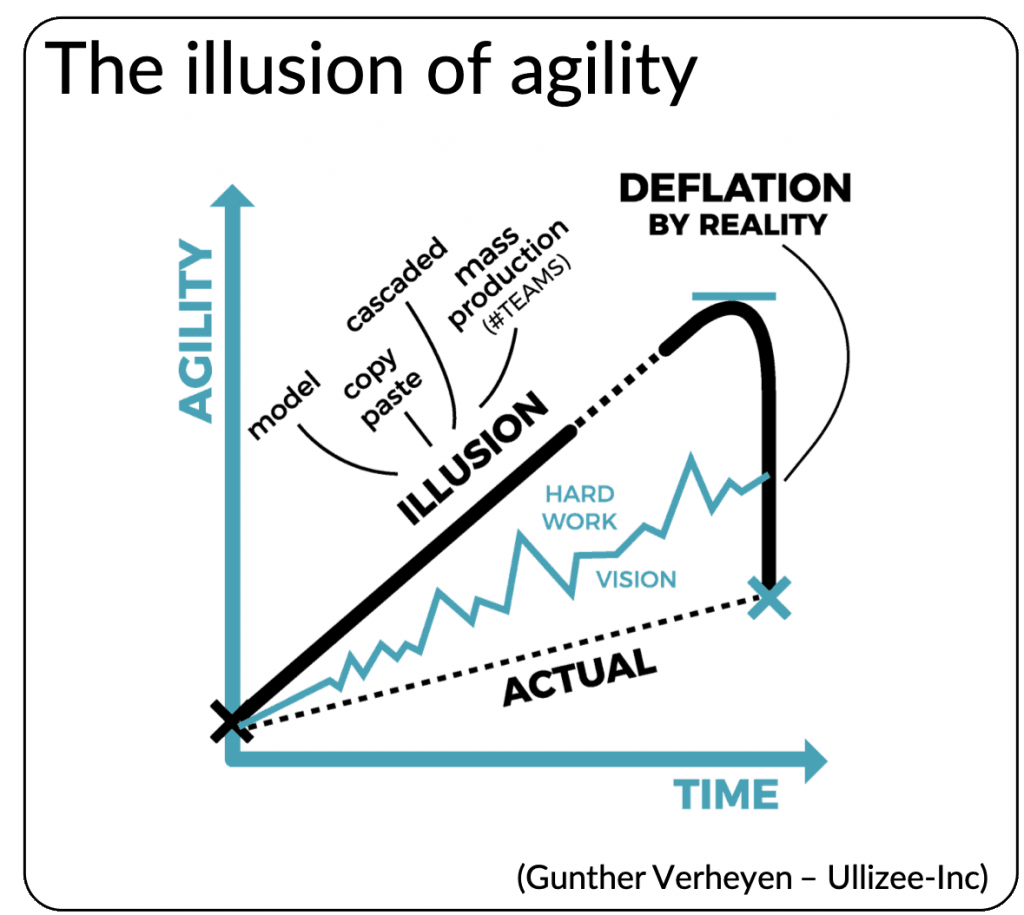The illusion of agility (what most Agile transformations end up delivering)
Agility is a unique and continuously evolving state that is typical to a specific organization with its people and its history. A traditional (industrial) approach to becoming more Agile commonly creates no more than an illusion of agility.
Agility is a specific state as it reflects the uniquelessons and learnings that an organization and its inhabitants went and go through, the way in which specific annoyances and hindrances were and are overcome, the many inspections and adaptations that occur along the journey. Agility is a unique signature with imprints of the people involved, their relationships and interactions, used and abandoned tools, processes, practices, constructs, within and across the many eco-systems that make out an organization, and potentially stretching across the organization’s boundaries.

No model can predict, outline or capture the unique signature that agility is.
However, many of our organizations have their roots, and their beliefs, in the past industrial age. As they feel the need and the pressure to increase their agility, they naturally revert to familiar, yet old-school, industrial recipes. They undertake cautiously planned attempts to shift to the Agile paradigm, wrapped in separate change projects. They imitate what other organizations do. They copy-paste what others claim brought them success. They enforce processes and practices in a cascaded and mass-production way. They rely on models that prescribe generic pre-empted organizational structures. The learnings and the hard work needed are conveniently ignored. Ironically, these are the exact approaches they need to abandon in order to enter and survive the new worlds that require higher agility.
The mismatch is fundamental. They need and want to hose down their industrial ways, yet re-inforce them. An illusion of agility is created, which is painfully revealed when, often after several years, the deflation by reality happens. In the face of the urgency, the increase in agility is negligible. The actual results are disappointing.

The deflation hits hard when it turns out that the people creating a company’s products and services are not happier (rather they keep leaving and no new talents can be attracted). When it turns out people are not happier funding the work (not achieving the gains and returns hoped for). When it turns out people are not happier buying and consuming the organization’s products and services (and usage and satisfaction keep declining). Overall, the old predominant disconnectedness is not resolved. The top-down line organization with its typical silo structure and separation of skills and expertise is not replaced with team work, shared purpose and commitment. Blaming keeps taking precedence over collaboractiveness.
Agility is a path requiring vision, belief, persistence and… hard work. Agility, as a state of high adaptiveness, is achieved by learning how to regularly adapt upon inspections of actual work and observable results, of implementing feedback loops all around. What works today might not work tomorrow. What works for one combination of teams, technology and business might not work for another combination.
Signposts that might keep you from getting stuck in an illusion of agility are:
- It is not a transformation if it doesn’t change how you work.
- It is not an Agile transformation if it doesn’t simplify how you work.
- It is not an adoption of Scrum if it doesn’t engage and energize people (customers, teams, stakeholders).
Living the art of the possible against unpredicted outcomes engages people as it shapes their future. Getting the most out of the possible thrives upon acceptance of the unwritten state of the future and what that future might bring. Acceleration comes from vision, determination and dedication; from the courage to move away from following a plan or copying a model.
Regardless an organization’s past attempts and choices, reverting to the path of hard work is always a workable way out.
(Thank you, Higher View, for your professional expertise in video creations)
Published on Java Code Geeks with permission by Gunther Verheyen, partner at our JCG program. See the original article here: The illusion of agility (what most Agile transformations end up delivering)agile Opinions expressed by Java Code Geeks contributors are their own. |


